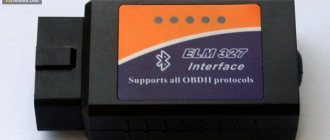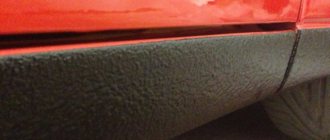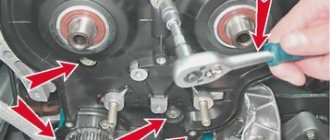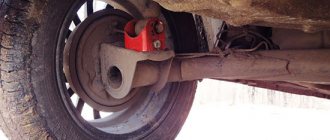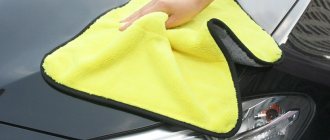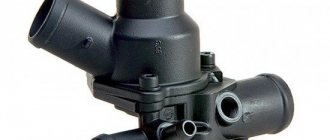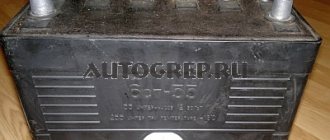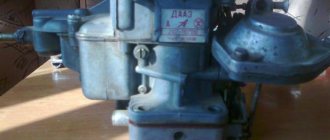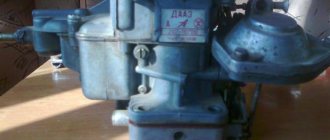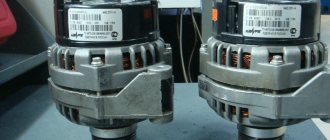Practice shows that an impressive proportion of motorists do not pay any attention to situations when snow sticks to the fender liners and wheel arches of their cars. They argue that the metal can cope with soft snow, and therefore there is no point in worrying.
In reality everything is different. Ordinary soft snow can turn into a serious threat. Therefore, ignoring the accumulation of snow masses is strongly discouraged.
There is another problem. Drivers do not know how to act correctly in the current situation. As a result, they can damage their own car with their own hands.
Considering the disappointing statistics of breakdowns caused by simple snow accumulation, you need to find out what the danger is, how to properly get rid of snow and ice, and also what mistakes should not be made. Plus, we’ll separately tell you about products that have proven themselves to be effective in preventing sticking.
What is fender liner treatment?
Protecting a car's fender liners includes a number of measures that will vary depending on what material the element is made of. Today, car fender liner protection is made from:
- steel or aluminum;
- polyethylene, ABC plastic, fiberglass;
- liquid compounds (“liquid fender liners”);
- films.
Each type has advantages and disadvantages and is used in certain cases. Before covering the fender liners of a car with a protective film or anti-corrosion agent, it is necessary to remove the part and treat the wheel arch. For plastic and fiberglass elements, anti-corrosion and anti-gravel are not used: the material is not subject to corrosion and does not react with salt reagents. The only thing that can ruin a plastic element is a crack caused by gravel. The structure can be strengthened with armored film.
Liquid fender liners Solid
If a car uses steel fender liners, it is recommended to treat them with an anti-corrosive agent to prevent metal oxidation and corrosion (rust quickly spreads from wheel arches to doors and sills).
Technological processing of steel parts is reduced to cleaning the part, degreasing, coating with anti-corrosion or anti-gravel.
What is the danger?
During snowfalls, the cars look about the same. All drivers are trying to drive through snow drifts. In this case, the wheels scatter fallen snow to the sides as they rotate.
Gradually, sticking occurs on the bumper and sills, but the most intense sticking is observed in the area of the wheel arches. It would seem that there is nothing terrible or dangerous here. It's just snow. It is quite soft in its structure, and therefore cannot cause any harm to the car. Not everything is as harmless as it might seem at first glance.
Nothing bad happens as long as the car moves in the general flow. Even if snow completely fills the space of the wheel arches, the structure remains loose and soft. Any turn of the steering wheel and the wheel will cut off the snow mass. No harm or damage.
But there are other situations. For example, when a car, having collected snow in the fender liners, moves straight for a long time. It practically doesn't turn anywhere. During this period, the adhered snow becomes denser and becomes covered with a crust of thick ice. As a result, a dense lump forms next to the rotating wheel. And the gap between them is minimal.
The same thing happens when a car is left outside in cold weather. During downtime, the snow mass also turns into ice.
An icy snow mass is much more dangerous than sticky soft snow. There are several reasons for this:
- Uncertain behavior of the car. When driving, the car behaves unstable because the tire hits the ice when turning the steering wheel. At the same time, strong friction occurs. And it’s hard to say who will win, hard ice or soft rubber.
- Tire damage. Rubber suffers largely due to strong friction. In the best case scenario, you will have to replace the tires at the end of the season. At worst, a cut will occur and the wheel will come apart. And if this happens at high speed, then the forecast for the consequences of a skid may be disappointing.
- The suspension suffers. In addition to unstable suspension behavior, you may encounter severe impacts, cracks and damage. Ice limits the movement of the wheel inside the arch. Consequently, the up and down travel of the suspension is reduced. This leads to problems with the chassis and more.
- Damage to wheel arches and body. Tire bounces and impacts can cause damage to the wheel arch. There are a number of examples where ice in the fender liners led to body deformation.
- Can't turn. Imagine that while moving there is a need to turn to the side and make a maneuver. The driver turns the steering wheel, but nothing happens. The wheels are blocked due to ice on the fender liners. This is a threat to the health and life of the driver himself, his passengers, as well as other road users.
If the wheel begins to beat from ice that has stuck to the plastic elements, it is absolutely possible that the plastic wheel arch liner or mudguard will simply fall off. They are usually held on by light pistons. Less often on self-tapping screws. But sometimes this is not enough for the fender liner to stay in place.
It’s not hard to imagine what the consequences of parts flying off a car can be.
One more thing. During snowfalls, in order to combat snow drifts on the roads, they are covered with special reagents. Sometimes it's just salt. Or more powerful chemicals. By sticking together with snow, the reagents can damage the plastic and provoke active corrosion on metal elements. Plus, they quickly destroy electrical wiring and break contacts, even with a layer of insulation.
The conclusion is obvious. You need to carefully monitor the condition of the wheels, check for sticking snow on the fender liners and take the necessary measures in a timely manner.
What are Dinitrol liquid fender liners used for?
The so-called lockers are designed to protect the metal body from various damages, including:
Rocks and sand flying out of wheels
Rainwater and dirt from roads
Salt and chemical compounds
All of them negatively affect the condition of the wheel arches, causing the formation of corrosion areas. Standard plastic protection is not always effective, so in addition to it or in the absence of it, you can buy special compounds from us that allow you to create liquid fender liners.
Which method to choose
There are several ways to protect arches from the negative effects of water, dirt and stones. These surfaces are covered with fender liners, but even they cannot provide 100% protection of the arches from dirt and corrosion. Treatment with special compounds is required, the choice of which depends on the preferences of the car owner and his willingness to incur financial expenses.
How to treat car arches:
- Spillage of used oil. If you do it yourself, this method doesn’t cost a penny, but instead you have to pay for it in terms of lost time. To ensure protection against rust, you have to add oil 2-4 times a year. The disadvantage of this method is that used oil contains toxic substances that, when evaporated, have a harmful effect on the driver and passengers.
- Lubrication with inexpensive domestic products. They are made on the basis of bitumen, lithol, motor oils, kerosene, drying oil, and anti-corrosion additives. Treatment frequency is once a year. This costs more than used oil, but takes less time and effort.
- Use of expensive imported products. Experienced car enthusiasts believe that the only difference between such compounds is that they require updating less often. Fundamentally, they are no different in any way - they simply protect the metal from corrosion. But no anticorrosion agents will remove existing rust, and they will not repair holes in the metal.
On a note! Wheel arches in European cars begin to deteriorate after 3-4 years of operation, in Chinese cars - after 1-2 years.
Sound insulation with plastic fender liners: work procedure
It is believed that the only purpose of plastic fender liners is to protect the arches from dirt or water. But we cannot fail to note one more function - the ability to use the product in the form of a sound shield.
Proceed as follows:
- Remove the wheel arch liners, clean them and treat them with a degreasing compound.
- Perform arch processing in the order described above;
- Apply Vibroplast to the inside of the fender liner. Be careful - some fender liners have holes for ventilation. If this is your case, then it is not recommended to close the holes.
- Use Splen to improve overall work efficiency and ensure that extraneous sounds are reflected from the surface.
The disadvantage of the considered option is that when temperatures fluctuate, Splen can move away from the surface. To avoid this, use another option:
- Attach rubber plates to the inside of the lockers; these can be “Comfort” sound insulators based on foam rubber (alternatively, they can be cut from car mats).
- Fix the product with waterproof glue.
The difficulty of the rubber mat method is that the rubber material is hard and difficult to cut.
In addition, it is important to use the glue correctly - it must have waterproof qualities. Otherwise, the layer will not last long.
The peculiarity of the “Comfort” sound insulator is that it has a fleecy surface, does not rot and is able to soften shocks, while it is self-adhesive.
What are liquid fender liners on cars?
Liquid fender liners, what is it? These compositions are based on rubber resins, wax, and oxidized bitumen. To increase strength, fiberglass or rubber granules are added. After applying and drying the special composition, a durable, elastic and wear-resistant coating is formed. The noise inside the car will be reduced, and the effect of abrasives on the car body will also be neutralized.
Most often, markets offer liquid sound insulation in a can, with which you don’t need to do anything except apply it immediately. Anticorrosive liquid fender liners will immediately fill all microcracks on the surface of the wheel arches, thereby providing reliable protection against corrosion.
Nuance
Surely some craftsmen will want to give the soft fender liners even more perfection by adding some auxiliary components to them. This should not be done, because without proper understanding of the matter, you can do more harm than good. Thus, liquid fender liners will no longer be as effective as the manufacturer expected when developing them.
When and why to soundproof the fender liner?
Service station technicians and people with experience in similar work are confident that proper sound insulation of fender liners is a guarantee of solving the following problems:
- Reducing noise from stones that fly out from under the wheels and hit the arches.
- Protection from salt and snow that gets into the nooks and crannies of the metal and accelerates the corrosion process.
- Reducing the destructive effect on the body.
- Increased comfort in the cabin by eliminating extraneous sound.
For greater efficiency it is recommended:
- Carry out noise insulation of the fender liner along with the treatment of wheel arches and the bottom with vibration and sound-absorbing material.
- Use high-quality products that can absorb extraneous sounds and vibrations, as well as withstand elevated temperatures.
Anti-corrosion treatment based on bitumen
"Antikor" is a Russian-made product for maximum protection of any surfaces. "Dinitrol" - liquid fender liners. This unique composition is excellent as an anti-corrosion protection and soundproofing material.
Also, the formula in this product allows you to protect surfaces from chips that can form as a result of exposure to gravel or sand.
Compositions with metallized substances are designed to reduce the impact of active chlorine ions. The product is also a type of wheel arch protector. The product line provides maximum protection from any environmental influences.
What compositions do manufacturers offer?
The range of anti-corrosion products, given its diversity, is not so easy to understand. Classification by content helps to understand what formulations manufacturers offer - on what basis the product is made.
Bituminous
Bitumen mastics are a viscous material with excellent waterproofing. They are used for processing the bottom of cars and arches. Bitumen products can be mixed with gasoline, solvent, and white spirit.
Features and advantages of bitumen preparations:
- moderate cost;
- good sound insulation;
- wide operating temperature range;
- frost resistance;
- excellent anti-corrosion properties;
- Different application options are allowed - with a spatula, brush, spray gun;
- sold in different containers: you can buy the composition in a plastic canister, iron can or aerosol can.
In turn, there are several types of bitumen mastics:
- Shale. Made from bitumen. Plasticizer – mineral oil. Coating color – black. The downside is the low operating temperature range. The extreme lower limit is -20°C. This composition is not suitable for regions with cold winters.
- Polymer-bitumen. They contain polymers, are plastic, have a high level of adhesion, and last longer than other bitumen compositions. These mastics also contain corrosion inhibitors, rust converters, and solvents. Apply the composition at room temperature in 2-3 layers. Drying time – 24 hours. Retains properties over a wide temperature range – from -50 to +100°C.
- Bitumen-rubber. Bitumen provides moisture protection, rubber prevents cracking in frost. They tolerate frost well - can withstand temperatures down to -60°C. They are viscous mixtures that, when dry, shrink greatly. They dry quickly, are inexpensive, but have a thick consistency.
There are two types of bitumen-rubber mastics - cold and hot. The latter cost less, but require heating. They do not shrink during hardening and have a high drying speed. It is recommended to apply it at sub-zero temperatures.
Popular brands: Kerry, MasterWax, 3ton, Oil Right, Barrier and many others. Any polymer (polymer-bitumen) or rubber (rubber-bitumen) composition is suitable for processing arches. They are usually packaged in 0.5-1 liter cylinders or 0.8-3 liter jars. The cost of a unit of goods varies between 100-800 rubles.
Epoxy
Such products are considered the most durable among mastics, but they do not withstand impacts well, cracking and chipping at low temperatures. Epoxy mastics can be applied directly to oily areas, but they must be washed and dried.
Often the mastic comes with a solvent that is added before use. Recommended layer thickness is 2 mm. The composition dries completely within 24 hours. For wheel arches, for example, NoiseLIQUIDator brand mastic is suitable.
On a note! The most reliable element of wheel arch protection is polymer fender liners that protect the metal surface from corrosion. The material of this element is neutral to salt and other reagents that are sprinkled on roads.
Wax
A distinctive feature of such compositions is the absence of color. Compared to bitumen products, wax analogues are characterized by higher fluidity. The advantage of such mixtures is their high resistance to frost. Wax-based mastics contain corrosion inhibitors, but they work when the anti-corrosion agent is in the liquid phase.
When the product dries into an elastic waxy film, the inhibitors lose their anti-corrosion properties. The disadvantage of wax compositions is their low mechanical strength. They are more suitable for processing internal cavities.
Liquid fender liners
Manufacturers are offering a new approach to processing arches. Polymer rubber compounds are durable and strong, they are often used as an alternative to fender liners. The new products, as manufacturers claim, have a unique formula. The product molecules are able to penetrate directly into metal structures. “Liquid fender liners” are sold in cans.
The use of such products, unlike conventional polymer-rubber compounds, is very simple and does not require special conditions. The liquid is sprayed over the surface of the arches before installing conventional fender liners. The disadvantage of such means is insignificant noise insulation.
One example of “liquid fender liner” is “Rust-Stop”, which is applied by spraying. It is a black or dark brown liquid based on highly purified oil, contains various inhibitors, thanks to which it acquires unique penetrating and impregnating properties.
Ordinary oil always floats on the surface of water, but Rust Stop mixes with water, forming a stable emulsion that settles on the surface of the metal and literally “grows” into it thanks to special physical and chemical bonds. Such products can be used on any car, with different mileage and condition.
Preservatives
The most popular product in this category is Movil. It is well known to experienced motorists and is popular among them. The name of the product comes from the cities of Moscow and Vilnius, where the research institutes that participated in its development were located. Movil consists of ceresin, oxidized petrolatum, drying oil, imported corrosion inhibitors and white spirit.
Movil completely seals and insulates metal surfaces. It is not affected by air or moisture, and it contains an inhibitor that actively fights traces of rust.
The uniqueness of Moville is that it can be safely applied directly to mastic or bitumen insulating coatings. After treatment with Movil, the metal receives additional moisture-repellent protection. The downside of the drug is that it cannot be combined with synthetic mastics: it loosens them. But Movil is compatible with all types of paint and varnish coatings and does not have any harmful effects on them.
Preparation for work and order of execution
The first thing to start with is to prepare the equipment and materials for work. Otherwise, you will be distracted by going to the store and end up wasting a lot of time.
If the car does not have plastic fender liners, then the material is applied directly to the metal of the arches.
As for the soundproofing of the fender liner itself, it is carried out using the following products:
Vibration damper.
The master recommends vibroplast, which is applied first. The advantage is a high mechanical loss coefficient and, accordingly, excellent damping properties.
The best option is to use Bimast Bombs KMP, for which the coefficient mentioned above is 0.4 units.
Due to the rigidity of the material, it can be used not only in small areas, but also for soundproofing the entire car. In this case, the brand of the car does not matter.
The advantage of Bimast Bomb lies in its composition. The basis is a bitumen-mastic substance. The surface is metallized on top and covered with an additional layer on the bottom for protection.
During the installation process, provide pre-heating, for which use a hair dryer.
The warming up process is carried out as follows:
- Remove the top layer and lay the product with the sticky part facing up. It is necessary to lay only on a washed, clean, dry metal surface;
- Heat the surface with a hairdryer until it shines. Do not overheat and do not bring to a boil;
- Turn the material over and glue it to the surface to be treated, then use the mounting roller to distribute the heated product.
Soundproofing material.
After the vibration damper comes the turn of Spleen, which can be the second or third layer.
Advantages:
- High efficiency;
- Easy to apply. This is primarily due to the presence of an adhesive layer, which eliminates the need to apply other compounds;
- Affordable price;
- Excellent thermal insulation qualities. Practice has shown that the use of this material guarantees heat retention, which is especially important in winter. If you live in a region with harsh winters, then this feature is only a plus;
- Reliability of fixation. After completion of the work, the material is firmly fixed, and it can only be torn off with great effort.
Due to its ability to repel sound waves, Splen is more suitable for processing the external part of the body.
For gluing the inside, give preference to Accent.
Please note that it is not recommended to glue Spleen as the first layer. The best option is laying the third layer after noise and vibration insulation materials.
When performing work, consider the following points:
- Use the largest sheet sizes to improve efficiency.
- Make sure to keep the number of joints to a minimum (again, to increase efficiency). If you only have small pieces of Spleen on hand, it is better to buy a whole piece.
Liquid sound insulation.
The main mistake of beginners is the use of sheet-type sound insulation. Its disadvantage is insufficient protection from environmental influences, namely:
- Excessive exposure to moisture absorption;
- Destruction under the influence of chemical reagents;
- Reduced service life with frequent changes in temperature.
If you ignore the recommendations and stick sheet material onto the fender liners, then over time it will delaminate and cease to cope with the assigned tasks - it allows extraneous sounds to pass through and does not protect the surface from corrosion.
Liquid sound insulation is more effective in this regard, and therefore is not a bad alternative.
Its advantages:
- Ability to withstand large temperature changes;
- Resistance to the negative effects of solutions containing salt and other reagents (often found on roads in winter);
- Resistance to impacts of a mechanical nature (gravel).
This type of sound insulation is based on liquid rubber, which acquires the required strength immediately after drying.
With proper treatment, the surface of the body is reliably protected from negative influences.
In addition, the composition eliminates noise penetration from the interior and extends the life of the metal without corrosion. The greatest effect is achieved when the material is used in combination.
Wax compounds
This group is distinguished by its lack of color. If we compare them with bitumen mixtures, wax products are characterized by increased fluidity. They are great for applying to visible areas of the body. In addition, wax-based mixtures are more resistant to frost.
Among these products, we can distinguish compositions with the addition of bitumen. They are ideal for processing wheel arches. Since the density of such liquids is much less than bitumen, all work can be carried out under significantly lower pressure. As a result, the efficiency of such processing is much higher.
Available means
If the driver cannot afford to spend money on expensive professional products at the moment, then they can be created from scrap materials. Ordinary water, to which glycerin is added in a ratio of 3:1, will come to the rescue.
The composition is used to treat pre-cleaned wheel arch liners. It is worth understanding that the effect will be much less than from using specialized means, but still better than complete inaction.
Processing rules
When treating wheel arches with anti-corrosion agents, certain rules are followed that allow you to achieve the desired effect:
- Rinse the surface thoroughly. If you miss this moment, all further work will be useless, since the protective compounds will not adhere to the metal.
- Dry and degrease surfaces. If traces of fat or moisture remain, the effect will not be sufficient.
- Clean the metal from rust. Since the compounds used serve to protect and not to remove rust, in order to treat the wheel arches of a car, it is necessary to clean the metal from traces of corrosion.
- The arches must be carefully coated. You should not skimp on protective drugs. Read the instructions for what area of treatment the product is designed for.
If you follow the above rules, the efficiency of processing arches increases significantly.
Correct installation of lockers
Many cars have factory mounting locations for fender liners. Special plastic “bugs” are used as fastening elements. The use of self-tapping screws is permissible when attaching lockers to plastic elements (decorative threshold trim, bumpers). If processed correctly, self-tapping screws can be used as fasteners at the bottom of the internal cavity of the mudguard.
Never use self-tapping screws to attach the fender liner to the edge of the wing. Moisture is trapped between the plastic casing and the wing. In the place where the metal is exposed, rusting will inevitably begin, which, moving upward, will destroy the paintwork.
When you can't do without self-tapping screws
If another installation method is not possible or if holes have already been drilled in the wing before you, the metal must be protected. If there are no traces of rye in the area where the paintwork is damaged, prime the area with epoxy primer and paint it with acrylic paint from a spray can. Rusted areas must first be cleaned and treated with a rust converter. After drying, treat the inner cavity of the wing and the edge adjacent to the fender liner with anti-corrosion mastic (for example, Movilya). Also soak the self-tapping screw in mastic before screwing it in.
Noise insulation of wheel arches: insulation of fender liners and car arches
The greatest amount of noise enters the car through the fender liners or what are also called wheel arches. First of all, the noise comes from the tires themselves, the suspension, as well as various stones and sand on the road surface. The higher the speed, the louder the noise. Manufacturers offer several options for completing the soundproofing package:
- minimum;
- average;
- maximum.
For a complete picture of the installation of sound insulation, we will consider the maximum configuration. In this case, soundproofing material is laid not only on the internal, but also on the external walls of the wheel arches. Although this is not possible with every car. Therefore, first, let’s take a good look at vehicles. We determine: the presence of lockers (plastic or metal protection); measure the distance between the locker and the wheel arch; We examine the arches in the cabin to determine the difficulty of dismantling the trim, measure the distances between the plastic trim and decorative elements. Depending on the result obtained after the study, we will consider the selection of materials:
Option 1. Sound insulation of the internal and external parts according to the maximum possible set:
- The first layer is vibration-proof, 3-4 mm thick. There are materials whose thickness is 1-2 mm. and their characteristics correspond to average materials of 3-4 mm, but, as a rule, such materials are more expensive because have not only a thinner layer, but also a reduced mass. Each arch will require at least one sheet.
- The second layer is a soundproofing layer. Preference in choosing a material should be given not only to the one with the greatest thickness, but also with thermal insulation properties. Of course, the thicker the “pie”, the better, but also 8 mm. Quite suitable. You must purchase at least 1.5 sq. m. or comparable to the size of the first layer.
- External wheel arch treatment. The outside of the arch can be processed only after all internal work has been completed. For the outside, it will be enough to additionally treat it with “liquid noise insulation”. These include various anti-noise mastics, aerosol materials - “liquid fender liners”. They usually contain bitumen or liquid polymers, or both materials at the same time. Bitumen is the most inexpensive materials. Polymer ones will cost more, but they are more effective.
Material consumption must be looked at in the instructions. Preparation of the surface to be treated is mandatory; it includes removing the old layer of sound insulation, cleaning the surface from dirt, degreasing and only then applying the material, otherwise it will not last long. To work, you will need to remove the wheels and protect the body parts with film (bumper, suspension parts, and other elements that may get sprayed with aerosol or mastic). Be sure to use a respirator, and the room in which the work is carried out should be well ventilated.
Option 2. Soundproofing the outer part with a missing protective arch.
For cars where protective lockers are not provided, only liquid sound insulation is possible. What materials to use to do this work are described in the first option. We do not recommend that you glue vibration insulation to the unprotected outer part of the arch because... First of all, it won't last long. Secondly, moisture will appear in the places of delamination, which will increase corrosion. It should also be noted that both mastic and aerosols take quite a long time to dry - up to 12 hours, during which time it is better not to use the car.
Option 3. Sound insulation of the external part with a locker (arch protection)
For cars with protective wheel arches or for those who planned to install it, the third option is suitable. We remove the lockers, then completely remove the factory standard insulation and anti-corrosion coating. Surface protection is mandatory for all elements. We apply liquid insulation in the form of enamel or aerosols. By analogy with the first option. Be sure to glue the Lockers with a special material 2 mm thick. The vibration-proofing layer can only be fixed if there is space between the body and the already applied layers. The fastening is also very important; it may need to be strengthened, otherwise the structure simply will not withstand an unplanned load. It is better not to use self-tapping screws for fastening; corrosion may appear and the wheel arches will gradually begin to collapse; it is better to choose reinforced plastic fasteners for standard places. In addition, there are ventilation holes on the lockers; they cannot be sealed with sound insulation. The surface of the locker to be treated must be degreased. You need to purchase at least 1 sheet for each locker being processed.
To independently install the purchased material according to selected work options 1 or 3, you will need additional tools:
- Mounting roller;
- Technical hair dryer;
- Knife and scissors;
- Clip removal tool;
- Degreaser or solvent;
- Tool set (screwdrivers, wrenches);
- Spatula and rag
To apply “liquid noise insulation” to the outer part of the arch yourself, you will need:
- Brush for applying mastic;
- Degreaser or solvent;
- Protective film and tape;
- Spatula and rags.
However, if you do not have confidence in your own hands, then it is better to entrust this work to professionals. Poor-quality installation of sound insulation will not only not fulfill its purpose, but may also have an aesthetically unsightly appearance. Professionals will carry out all the work quickly and accurately, saving the client’s efforts and resources.
Sound insulation without “lockers” (fender liners): work order
If the car does not have plastic fender liners installed, then the meaning of external sound insulation comes down to finishing the metal surface of the body.
Proceed like this:
- Clean the arches from dust and dirt. The best option is to use a washing machine that supplies high pressure water.
- Let the metal dry.
- Degrease the surface using nitro solvent.
- Use liquid or classic compositions to impart soundproofing properties. The choice of options is wide. If you don’t have a large sum on hand, give preference to multi-bitumen mastics. If there are no problems with money, then you can take a more expensive composition.
- Before applying the composition, cover the parts that you do not plan to cover with soundproofing material. Use plastic film for these purposes (fix it with tape).
- If you decide to use liquid sound insulation for arches, apply the first layer of mastic and let it dry.
- Treat the surface with a second layer, roll the product and dry.
Please note that the number of coats applied to the body may vary. This information can be easily gleaned from the manufacturer's instructions.
It also reveals the drying features of each applied layer.
Some “craftsmen” recommend making sound insulation in layers, that is, applying mastic, Splen, mastic, and so on (in a circle).
In this case, Splen will quickly peel off, and corrosion will not be long in coming.
Liquid fender liners or plastic, which is better to choose?
Which fender liners are better? Well, let's look at the specific advantages of liquid fender liners over rigid products:
1
. In the process of applying liquid fender liners, the appearance of places with crevice corrosion is eliminated, since there is no need to make holes in the body to fix the protection.
2
. Excellent resistance to wind, moisture and low temperatures.
3
. Easy to use.
4
. Absolute environmental safety.
5
. Can be used on almost any car.
6
. If there are any holes or parts in the wheel arches, they will not be blocked when using liquid fender liners.
The only thing that can stress the unlucky master is the correct process of applying the composition.
How to process arches
To cover the arches from the inside, a lift, like at a service station, is not needed. When doing the work yourself, it is enough to have an inspection hole or a jack.
Procedure:
- Remove the wheel and wheel arch liner.
- Cover the washed and dried arches with a protective compound in 2 or 3 layers. After each layer, take a break - 10-20 minutes so that they dry a little.
- When the last layer has dried, put the wheel and fender liner back.
- Repeat the operation for the other three wheels.
To work, you will need 5-6 hours and a high-quality protective composition - bitumen or wax mastic, or other protective agent.
Is it possible to do this work yourself?
As many car enthusiasts claim, the entire range of activities can be carried out in a garage.
All you need for this:
- Several hours of personal time;
- Knowledge of the technical part. Before starting work, study what, how and where you will glue;
- Availability of necessary materials (purchase in advance). We will consider below what is required to complete the work;
- A certain amount on hand. The level of costs depends on the quality of the selected products. On average, processing four fender liners will require 1500-2000 rubles (the most optimistic forecast).
Tips for choosing a protective composition
Dozens of all kinds of anti-corrosion agents for treating arches are sold on the market. They differ in price, composition, effect, duration and other features.
Protective compounds for arches should have the following features:
- Super strength. Anti-corrosion compounds for wheel arches are regularly subjected to “bombardment”; they experience the constant abrasive effects of sand and fine gravel, and therefore must maintain high strength characteristics throughout the entire period of operation.
- High thixotropy. The protective layer created resists abrasion. The composition does not crack or chip, but seems to liquefy and dampen the impact energy.
- Salt resistance. Arches are exposed to deicing agents. Only salt-resistant products will provide reliable protection in winter.
The main condition when choosing a mastic is that it reaches a solid state when drying.
On a note! High-viscosity anti-corrosion compounds are applied using special guns, which make it possible to apply a layer of the required thickness to the surface, foaming it to increase sound insulation properties.
Each car enthusiast decides for himself how best to treat the body of his car. If you expect to use the car for more than 5 years, regularly treat the arches, bottom, hidden and internal cavities with protective agents. And to make their use as effective as possible, choose an anti-corrosion composition taking into account the regional climate and driving mode.
Methods
For most drivers, mud flaps are rubber flaps that are installed behind the wheels near the bottom of the front fender and rear bumper. If we are talking about a car body, then a mudguard is usually called a metal casing that connects the spar, the engine shield and the wings in the nose (the shock-absorbing strut cup is part of the mudguard). In the rear part there is a mudguard - the wheel well of the body. The protection of these body elements will be discussed.
The car owner has only 2 ways to protect wheel arches:
- installation of fender liners. The plastic casing is attached to the wings and the internal cavity of the mudguards;
- liquid protection. The arch is treated with a special anti-gravel material based on bitumen and anti-corrosion components. For application, use a special gun that sprays a liquid mass, or a brush. After drying, a dense, damping surface is formed on the body, which has noise and vibration insulation properties.
Sound insulation deserves special attention. Due to vibrations from driving over uneven surfaces and the rolling noise of tires, the cavities of the mudguards are quite vibration- and noise-laden areas. Water, dirt and large stones flying from under the wheels, hitting the metal part of the body, resonate, which leads to the transfer of noise into the car interior. Good noise insulation protection of the wheel arches significantly increases the level of comfort.
Which is better
If we consider plastic fender liners and liquid protection separately, it is difficult to choose the best method. If there are factory places for attaching protection, as well as corresponding plastic products, it is better to give preference to fender liners. They are more durable in use. To install rubber mud flaps, you will not need to drill into the body, which is a huge advantage.
If there are no standard places for fastening in the wings, and the owner does not want to bother installing lockers without screws, then it is better to choose liquid sound insulation. In terms of the level of transmitted noise, these methods of protection are approximately the same, but the disadvantage of liquid fender liners is their fragility. Constant impacts of stones, dirt, moisture, temperature changes and vibrations of the body lead to delamination of the material. As practice shows, even high-quality processing must be repeated every 2-3 years.
The best way is combined protection with preliminary sound insulation. After applying noise and vibration insulation, the cavity is treated with liquid mastic. And only then the fender liner is installed.
Selection of lockers, mastic, sound insulation
Guidelines when choosing fender liners:
- thickness. Products that are too thin are damaged faster and are more susceptible to deformation in the hot season;
- elasticity. Lockers are made of ABS or PP plastic. The latter option is more elastic and therefore often more durable. But even with the same labeling, you can feel the difference between manufacturers. You should not buy products that are too hard, as the material will become completely hard in the cold, which can cause cracking;
- presence of stiffeners;
- holes for standard fasteners, if provided.
The choice of manufacturers is huge (API, ASAM, SA, FLORIMEX, GORDON, KLOKKERHOLM, POLCAR, SAT and many others). You need to identify manufacturers offering fender liners for your car model, and then ask about the operating experience of other car owners. One of the main factors, which, unfortunately, can only be checked during installation, is the coincidence of the body moldings with the shape of the fender liner. This will allow protection without distortion and tightly close all cavities.
Mastic, soundproofing materials
Previously, we have already considered the application of liquid sound insulation, on top of which lockers can be installed. To form liquid fender liners, you can use Dinitrol 479. As a pre-treatment before installing the lockers, you can use anti-corrosion mastic with a noise-absorbing effect from APP, Terotex, Schwarz or other manufacturers.
The following are used as sheet insulation:
- base layer of vibration-absorbing composition with a thickness of 2 mm;
- soundproofing material.
There are now a huge variety of material models, as well as manufacturers (Shumoff, STP, Vikar, etc.). Therefore, when choosing, you should focus on the price, as well as the thickness of the final coating. The noise-insulating “sandwich” should not interfere with the installation of lockers. It is advisable to buy material with an adhesive layer based on mastic rather than water-soluble adhesives.
User reviews
One of the car owners spoke very flatteringly about this technology. So, it was decided to install protection for the wheel arches on his wife’s Lanos. But there was no desire to make holes in the body for fastenings for plastic protection.
We decided to use this new technology. The choice was made in favor of Prim products. Liquid fender liners from this company are considered one of the best. The product was applied very quickly. This protective layer is practically invisible. After treatment, the car has been driven on various roads, and the protective layer looks as if it were brand new.
Another owner writes that he was pleased with the result of applying Dinitrol to his car. The car became quieter when driving.
Another advantage of this technology is that there is no need to drill holes. For a high level of protection, it is enough to apply good liquid fender liners to the surface - and you can forget about corrosion and noise.
Lockers made of aluminum and zinc
Aluminum and galvanized lockers were very popular in Soviet times. Naturally, they did their job, although they brought (and still bring) a lot of inconvenience to drivers. One of the weak points of such lockers was the presence of a rubber seal. Gradually, it wore away the protective coating of the wheel arch, resulting in corrosion. In addition, they could burst from stress while moving. A suddenly deformed locker (sometimes literally out of the blue) could create an emergency situation, which was repeatedly recorded in practice.
There are many ways to protect the wheel arches of a car. Each of them has its own clear advantages, as well as some weaknesses. Which option to choose is a matter of taste and desire of the car owner himself. Only one thing is indisputable - such protection must certainly exist! Good luck with your choice!
#Protection#Wheel arch#Wheel
